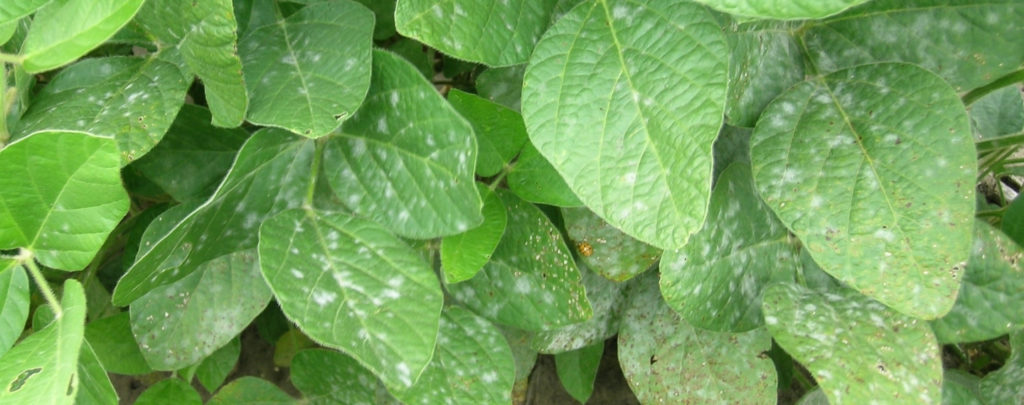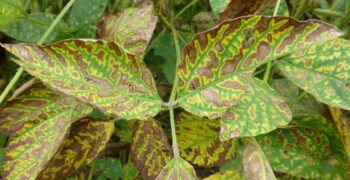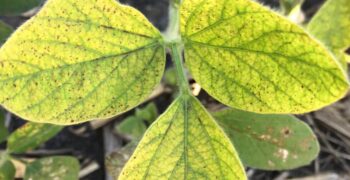Background:
Powdery Mildew is commonly found in the upper United States and Canada. When infection occurs early in the growing season, yield loss can occur. Plants that will be most susceptible are those planted later during the planting season. Cool temperatures, cloudy, and low humidity are ideal conditions for growth. Environments like this are hard to come by in the midwest, making powdery mildew an occasional issue. It is usually late season before environments like this appear in the midwest, allowing it to show up.
Scouting: (R3-R7)
When scouting for powdery mildew, look for a whitish-greyish talc like fungal material can commonly be found on the top side of the leaf. In extreme cases the fungal material can cover stems, petioles and pods, which can lead to premature defoliation of the plant. Other symptoms include leaf tissue turning yellow.
Management:
- Most varieties have at least some resistance to powdery mildew.
- Late planted soybeans that mature late in the season will be more susceptible when temperatures are cooler.
- Spraying fungicides can help control powdery mildew, scouting should be conducted first to judge the severity before spraying.
- Crop rotation will not help prevent the pathogen from infecting fields as it’s spores are blown in from long distances and do not survive in soil or residue.



